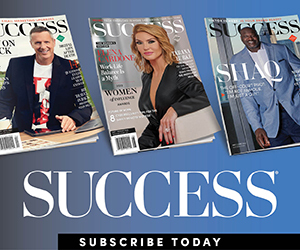Everybody loves a good joke, right? Sure. Until it’s not funny anymore. Even your guaranteed hit, the joke you could tell anywhere on any night and people would laugh, is not invincible forever.
Unlike music, no one wants to hear your greatest hits more than once. You have to constantly write new material, while retiring your (old) favorites.
It’s the same at work, where our communications strategies, employee engagement tactics, and even how we retain and converse with existing customers can get old and stale.
A decade ago, this was less of a problem. Internet connectivity and social media was not what it is today and our tolerance for the same message was a little higher, given the reduced saturation. But today, we run the risk of not only boring our audience, but driving them away in the process.
Now we have to be more flexible in our approach and ensure that when we do engage, we keep it fresh and interesting—which is not always easy to do as few people in the business world have been trained for life in the “entertainment industry.”
But behavioral strategists Dan Gregory and Kieran Flanagan say there are some steps you can take to increase your influence and engagement by learning how to refresh your shtick and develop your capacity to not just transmit but to hold attention:
1. Learn what really interests your audience.
No audience is precisely the same, and what makes one group roar with laughter can set another searching for their pitchforks and a rail to run you out of town. It means coming from a position of understanding of their points of view and aligning how you communicate with those views. Too often, our communications are all about us, not them.
2. Stop talking like a “businessperson.”
Communications is a human art, and it may surprise some of you to learn that your people and the people you serve are just that—people. Corporate communications is largely defined by jargon and dehumanizing language that none of us use outside of the business context. Consider how you might talk if you were gathered around a barbecue, not a boardroom. Professional and boring do not have to be synonymous.
3. Test your material on yourself.
If the positions were reversed, would your messaging be something you would pay attention to (be brutally honest here). If it would bore you, why would you subject those you wish to engage to it? People are largely more open-minded, more attentive and have greater retention of communications that are entertaining and engaging as well as informative. This doesn’t mean you need the polished style of a professional stand-up comedian, or even to be funny at all, but if you intend to lead or to sell, you’d better learn to be interesting.
4. Stop trying to look and sound like everyone else.
Part of the reason our customers and staff are experiencing record levels of disengagement (according to Gallup Research) is that they’re not only hearing the same message from you—they’re hearing it from all of your competitors as well. It’s reported that the average human being in the first world is exposed to approximately 3,000 formulaic commercial impressions a day—and two or three tellings can ruin even the funniest joke. Consider how much your communications deteriorate in 1,000 times that figure.


